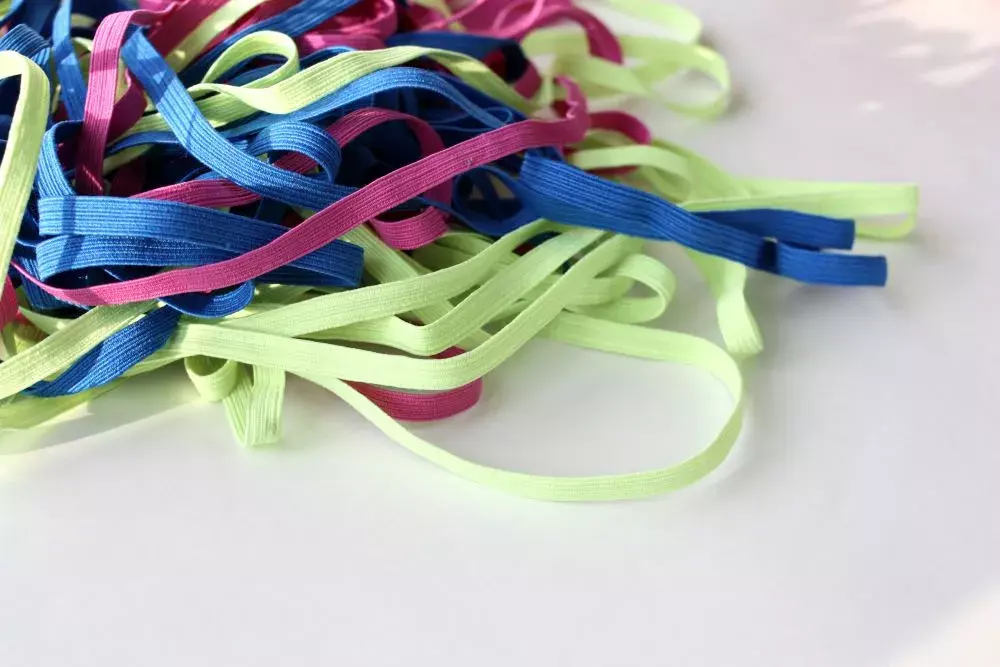All About Using and Buying Elastic for Sewing
2023-07-18
Are you interested in creating articles of clothing with your sewing machine? If so, consider building your skills to make your items even more functional.
While some clothing pieces, such as T-shirts and scarves, don’t need any extra features, many items require additional accessories to get them to their full potential.
One popular example of an additional feature used in clothing items is elastic. Elastic enables clothing items of all kinds to perfectly conform to the wearer’s body, which helps make these items better fitting, more comfortable, and easier to move around in.
Elastic can elevate the fit and functionality of many clothing pieces, including sportswear, swimwear, baby clothes, and much more. Just like there are many ways that elastic can be used for garments, there are several types of elastic for sewing designed for different functions.
Tips for Sewing with Elastic
Learning to use elastic for sewing projects will help you achieve the next level in your DIY abilities. However, if the elastic is applied incorrectly, your item may become unusable. Here are some of our best tips for elastic for sewing.
Know Which Type of Elastic You Need
You may think that all elastics are the same. However, that is simply untrue, and you’ll need to choose the right type to succeed with your sewing project. The main differences between the types of elastics are their size, length, and level of stretch.
For example, sportswear will require more stretch to be comfortable during vigorous activity. It will also need to stand up to lots of wear and tear. Conversely, the elastic needed for baby clothes will be much smaller and thinner to be comfortable for little ones to move around.
And if the elastic on your garment comes into contact with the skin directly, you’ll need to buy specific elastic that is meant for this type of wear. Otherwise, the elastic could irritate the skin.
Follow the Pattern’s Directions
Many sewing professionals of varying skill levels like to follow sewing patterns, especially if they’re trying out a new project. If you’re using a pattern to sew elastic pieces into your garment, follow the pattern's directions exactly.
In many cases where sewing professionals add elastic to sewing projects, the elastic should be slightly shorter than the length of the fabric encasing it. This is a great example of a key detail that could make or break the success of your project and will be noted in your sewing pattern.
Match the Weight of the Fabric and Elastic
Though elastic for sewing can be an important part of a garment’s functionality, the elastic itself shouldn’t be noticeable. This is true for appearances as well as the length and weight of the elastic piece.
Different types of elastic will also hold up better or worse with different fabric styles. Make sure that the elastic you choose is durable and thick enough to be effective for your sewing project without being so hefty that they make the garment uncomfortable.
Consider the Elastic’s Placement
As you’re designing your next garment project, picture what the garment will feel and look like before you sew the elastic. If the elastic band is put in an uncomfortable spot on the piece of clothing, your garment won’t be comfortable to wear. Try to keep the elastic out of areas that bend frequently, like the knees and elbows.
Keep Practicing
Learning a new skill with your sewing machine will always take some trial and error to get right. Make sure to be patient with yourself during the process. And if you make a mistake with your elastic, note what went wrong and what you can do next time to improve it.
High-Quality Elastic to Withstand Wear and Tear at GoldStar Tool
The perfect clothing garment with elastic starts with the right products. Find all kinds of elastic for sewing, DIY sewing machine ideas, and more at GoldStar Tool.





